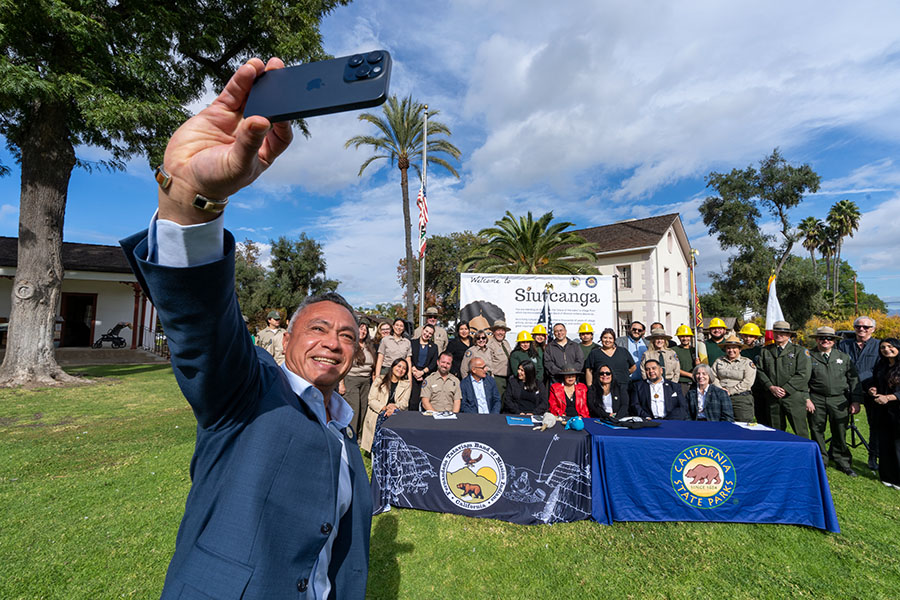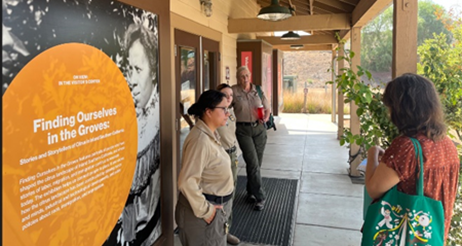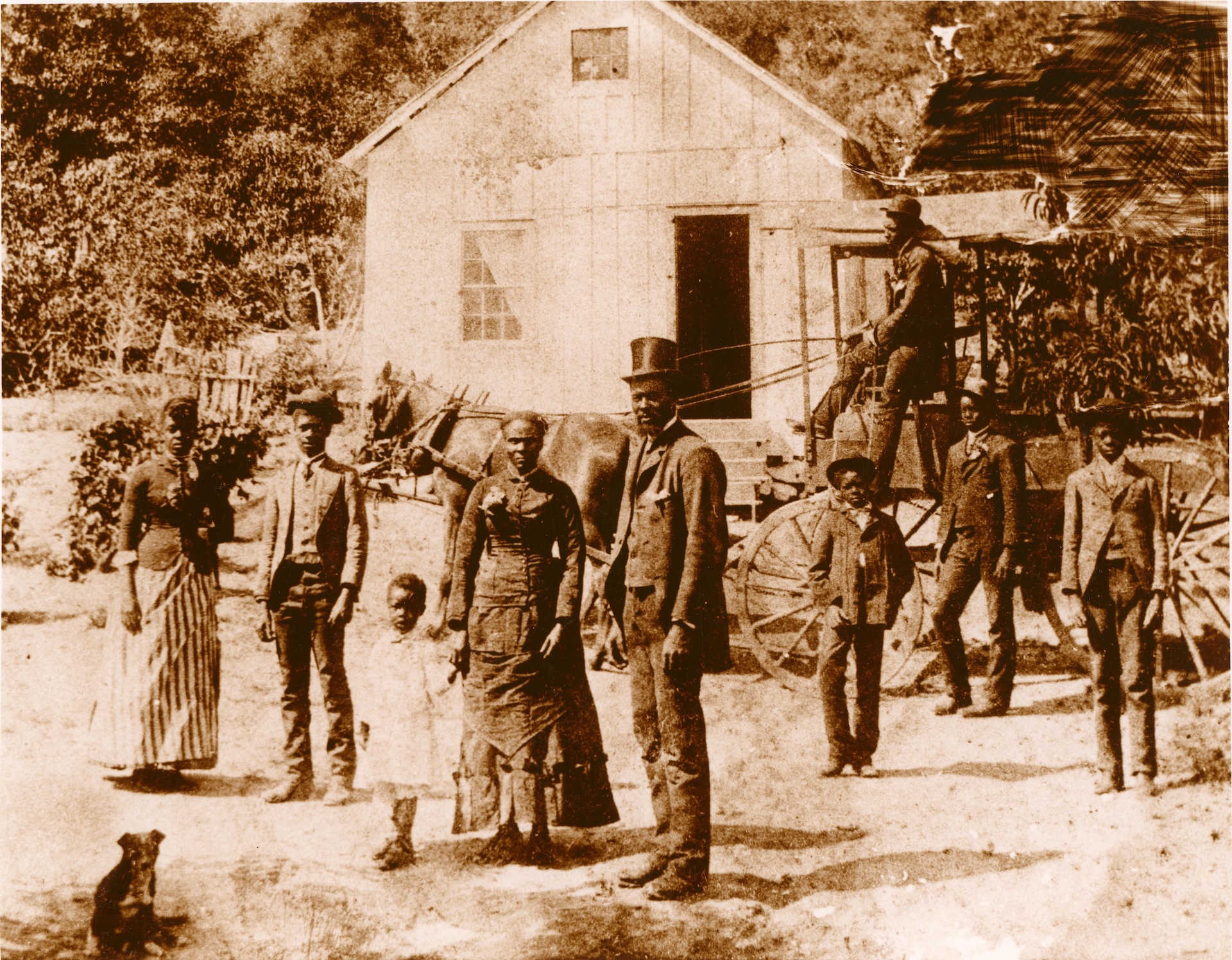State Parks is taking stock of and critically reexamining its past, looking specifically at contested place names, monuments, and interpretation in California’s State Park System as part of a Reexamining Our Past Initiative.
Data collected by the department during a brief survey of state park units in June 2020 made clear that it must act to further identify and remove residual derogatory place names; inappropriate honorifics associated with the historical legacy of some of its monuments, statues and plaques; and inadequate interpretive programs or exhibits that fall short in fully contextualizing California’s history in parks. State Parks’ Tribal Affairs Program will assist with the identification and redress of discriminatory names of concern to California Native American Tribal Nations.
Working with community partners and universities is fundamental to ensure that State Parks’ educational programs and exhibits support public educational standards and are grounded in contemporary research methodology. As such, there will be opportunities for the public to participate in and comment on the department's efforts.
Individuals interested in subscribing to updates on this important effort or who have a location that needs evaluation are asked to email the department at planning@parks.ca.gov.
On Sept. 25, 2020, California Natural Resources Secretary Wade Crowfoot, State Parks Director Armando Quintero and Department of Transportation Director Toks Omishakin announced a series of actions to identify and redress discriminatory names of features attached to the state park and transportation systems. The move comes in the wake of a national conversation about the names of geographic features and builds upon Governor Gavin Newsom’s work to support equity, inclusion and accountability throughout the state to better reflect our values. These steps also dovetail with several policies advanced by Governor Gavin Newsom that seek to examine and address historic wrongs and promote access and inclusion for California Native peoples. Additionally, Secretary Crowfoot directed the Natural Resources Agency to expand representation and increase transparency for the California Advisory Committee on Geographic Names, the state committee tasked with recommending changes to geographic names in California.
Place Name Renaming and Restoring
Tribal Agreements

The Arts in California Parks initiative, launched in 2023 in partnership with the California Arts Council and Parks California, brings together talented artists, wise culture bearers, California Native American tribes, and diverse communities across the state. Together, experiences in parks are being created that celebrate our past, reflect our present, and imagine our future; from awe-inspiring installations that transform familiar landscapes to events and programs that ignite creativity! The program kicked off with 19 pilot projects across California State Parks and it continues to build the foundations for a sustainable program. With relationship building tools like the growing Artist Directory, it’s easier than ever to spark collaboration and build capacity for more arts programming in more State and local parks! Visit https://artsincaliforniaparks.org to learn more. UC Riverside and State Parks team gathered in front of the Visitor Center showcasing the exhibit “Finding Ourselves in the Groves.”
UC Riverside and State Parks team gathered in front of the Visitor Center showcasing the exhibit “Finding Ourselves in the Groves.”Relevancy and History Program
Arts in California Parks
And the excitement doesn’t stop there—in 2024, the Local Parks Grant Program was launched, investing $2.8 million to support innovative projects across California. These grants are turning local parks into cultural hubs, celebrating California’s rich heritage while creating unforgettable experiences for visitors and residents alike. Students creating tule cordage under the guidance of Petee Ramirez, Senior Traditional Ecological Knowledge Specialist with the Shingle Springs Band of Miwok Indians.
Students creating tule cordage under the guidance of Petee Ramirez, Senior Traditional Ecological Knowledge Specialist with the Shingle Springs Band of Miwok Indians.
The African American History and Engagement project is a five-year collaborative effort (2022-2027) with the California African American Museum to research and recover histories, and design and implement innovative and engaging interpretive exhibits, in approximately 24 State Parks. The project will also institutionalize restoration of neglected histories through interpreter training programs and archival practices. More information on the MOU and Interagency Agreement between CAAM and DPR that supports this collaboration can be found here. Through the Tribal Lands Acknowledgement, Interpretation and Exhibits Improvement Project, California State Parks seeks to strengthen tribal partnerships and connect the public with diverse tribal histories, cultures, and contemporary experiences of California Native Americans. The project includes co-creating meaningful land acknowledgements in parks with tribes throughout the State of California and improving interpretation programs and exhibits in approximately 30 prioritized parks. California State Parks is working on the Tribal Lands Acknowledgement, Interpretation and Exhibits Project to honor Native American tribes’ ongoing connection to their ancestral land. With local tribes, meaningful Land Acknowledgment Statements are being co-created at parks throughout the state to use on new entry signage, in person at events, and on parks websites and educational materials. The goals are to strengthen tribal partnerships and foster greater public visibility of these tribes. In 2023 and 2024, a series of government-to-government consultations was initiated across California. In 2024, over 50 consultations with tribes were held to discuss co-creating content for entry signage and land acknowledgements, and to gather feedback on how better collaboration can be fostered with tribes. As of January 2025, 63 tribes have expressed interest in joining in this important effort. Looking ahead, California State Parks will continue collaborating closely with tribes to develop and refine the content for entry signage and land acknowledgements. Complete fabricating and installing of signs is expected by early 2027. California State Parks is working on the Tribal Lands Acknowledgement, Interpretation and Exhibits Project to better contextualize the culture, history, and contemporary experiences of California Native Americans. With local tribes, California State Parks is co-creating updated and new exhibits and interpretive content for museums and outdoor displays. The goals are to strengthen tribal partnerships and provide the public with accurate and inclusive information. In 2023, California State Parks started over 20 projects in parks throughout the state, including listening sessions with tribes, exhibit designs, and new interpretation panels across parks. These projects, led by State Parks Districts, focus on collaborating with tribes, where they have expressed interest, to create meaningful content. In 2025, California State Parks is kicking off new projects across parks that continue to be co-created with tribes to share appropriate content and reflect their historical and contemporary experiences. African American settlers of Coloma.
African American settlers of Coloma.African American History & Engagement
Park Interpretation
 Sonoma Mission State Historic Park.
Sonoma Mission State Historic Park. Indigenous panel
Indigenous panelTribal Lands Acknowledgements, Interpretation and Exhibits Improvement Project
Resources
Department Tribal Liaison and Consultation Policies
